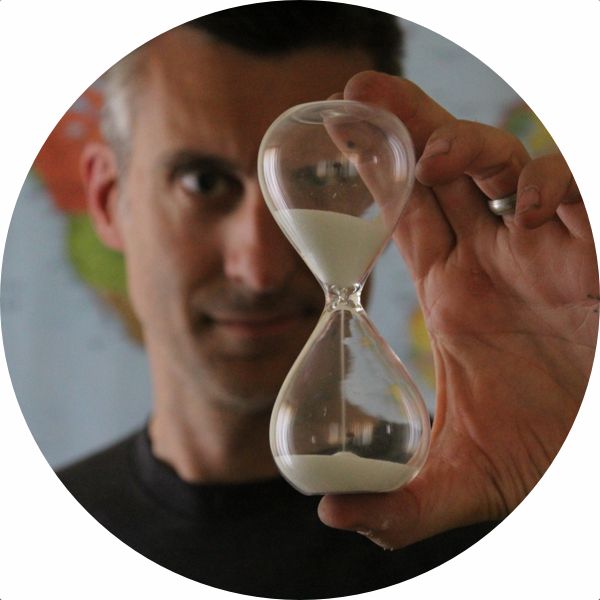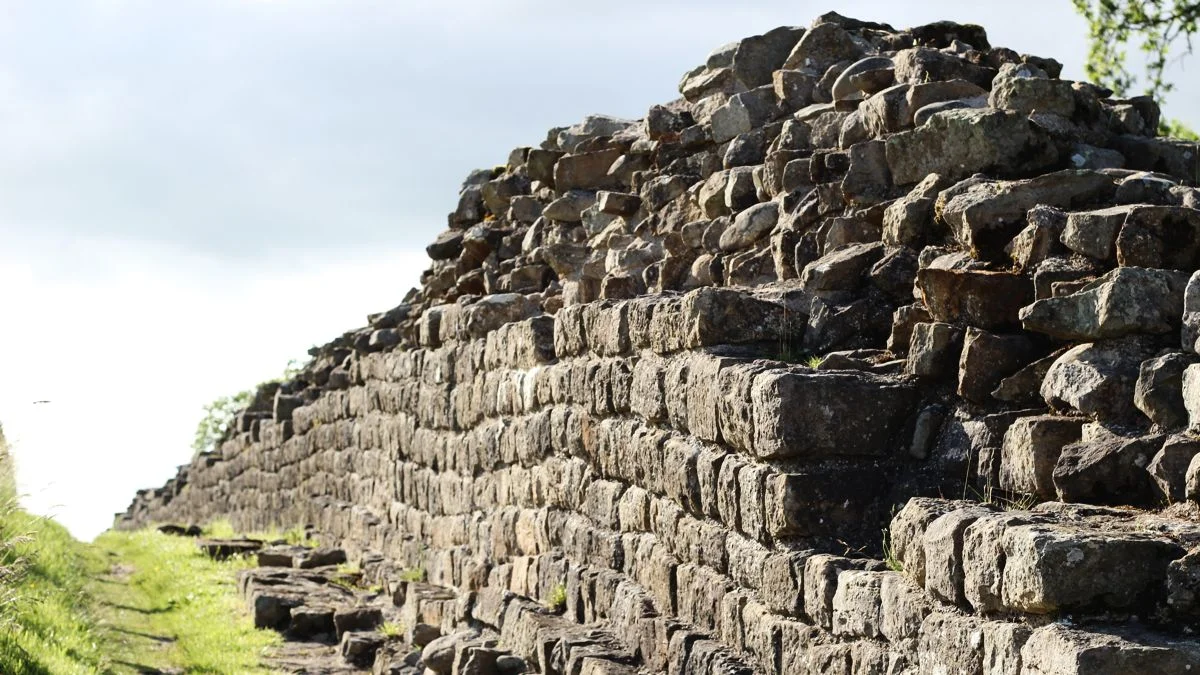Wednesday, 10-06-2015. Day 294.
Canals, Red Lights, Houseboats, Miracles.
After enjoying some hamburgers in Hamburg, we drove through Germany into the Netherlands heading straight for Amsterdam.
After some shenanigans with figuring out where to park the car inside a city made from rings of canals, we checked in to our home for the next four nights — a houseboat that was floating right on the canal.
Amsterdam Houseboat
The houseboat was also right next to a playground, and one added benefit of staying in a houseboat next to a playground was that we got to meet a lot of the local kids as their footballs soared over the fence lining the canal and right into the waterway.
Floating balls.
We were spent a lot of time helping the local kids fish their ill-directed footballs out of the canal — often two or three times in the space of a few minutes. So that was fun.
Amsterdam
The morning after we arrived in Amsterdam, we walked to the nearby metro station where we caught the train that took us to Amsterdam Central. From there we walked to Dam Square to hook up with the Sandeman’s Free Walking Tour of Amsterdam (as we do whenever we can).
Unlike all of the other tours we'd taken with Sandman’s, this one required a €3 booking fee, which was a little odd, but I think it was to manage group size (as well as the flake factor from people who sign up for a free tour and then don’t show up) in a very tourist-heavy city.
But despite the booking fee, there were still plenty of late-comers showing up five minutes after the start of the tour. A few of them made the cut, but most of them didn’t, which was the first time we saw people turned away from a Sandeman’s tour. So we recommend booking a reservation online for the Sandeman’s tours (and showing up).
But once all that was figured out, our guide, a German fellow by the name of Michael, wasted no time in getting started with a little history of Amsterdam.
Like many of the old cities of Europe, Amsterdam — which sits at 5.7 meters below sea level — started as a fishing village and soon grew into a very busy center for trade. It became so busy, in fact, that for about 100 years (starting in the early 1600s), the Netherlands was the wealthiest nation on the planet.
One of Amsterdam's many canals.
The city has so many canals, it’s often called the Venice of the north. But Amsterdam has more water (more than 100 kilometers of waterways that are up to three meters deep) and more bridges (1,280) than Venice, so Michael pointed out that the Italian city should be called the Amsterdam of the south.
The canal system, which is a UNESCO World Heritage Site with the unwieldy name of the Seventeenth-Century Canal Ring Area of Amsterdam inside the Singelgracht., took 100 years to build.
De Wallen (Red Light District)
With that cleared up, we started off toward the infamous De Wallen — the safest area of Amsterdam — more commonly known as the Red Light District.
Michael was courteous enough to check with us if that was okay (we were the only attendees with kids). We figured after seeing plaster casts of vaginas in Tasmania and countless wooden penises through Bali and Greece, seeing a few ladies in underwear would probably be all right. And it was.
Like any port town, the area around the docks in Amsterdam caters to seamen, including providing certain services to lonely men for a fee. These days those services start as low as €50. Michael didn’t give us any further details on this, but I’m sure you can use your imagination. What he did tell us, though, was while these services have been available to sailors (and tourists) for hundreds of years, they’ve only been legal since 2000.
There are no photos allowed in the Red Light District (for obvious reasons), and after a short stroll through the central part of the district, we stopped in front of the The Old Church, which is the oldest stone building in Amsterdam. It is well-located and was well-known for selling indulgences to those men who have sinned or pre-indulgences for those who knew they would be sinning.
Old Church in Amsterdam's Red Light District
Sandeman’s also offers a night time Red Light District Tour, one of the most popular tours that the company offers, for only €14. But we abstained because, you know, kids.
The Miracle of Amsterdam
After the church, we left the Red Light District behind (but not before passing the Kindergarten next to the Sex Shoppe) and stopped to learn about the Miracle of Amsterdam, a religious event that took place on March 15, 1345.
A sick man who had been given the holy sacrament vomited it back up. The resulting mass was tossed into the fire (as they did back then). However, the host didn’t burn. Instead it floated above the fire.
A woman attending the man was able to draw this floating mass out of the fire without being burned. Because of this miraculous event, the substance was recognized as a holy relic by the Roman Catholic church and a silent processions celebrating the miracle took place every April (until the Protestant Reformation put a stop to the practice).
In time, the room of the sick man was turned into a church called the Holy Room, and when most of Amsterdam (including the Holy Room) burned in the great fire of 1452, this relic remained undamaged. It even allegedly cured Maximilian of Austria, who would become the Holy Roman Emperor in 1486.
Our Dear Lord in the Attic
Also near this spot, Michael pointed out the Our Dear Lord in the Attic across the canal from where we stood. This is an old 17th century canal house that conceals a Catholic church in the attic, a response to the laws of the Protestant Reformation than banned Catholicism in the Netherlands. We didn’t venture inside (€9 for adults, €4.5 for kids), but they say it’s quite beautiful.
Nieuwmarkt
We walked a little further to Nieuwmarkt, a city square that's dominated by De Waag, a building that dates back to the 15th century. De Waag was once a gate in the city’s walls and is the oldest building in Amsterdam that’s not affiliated with any religion.
De Waag, the Weighing House
After the walls were demolished, De Waag became the city’s weighing house (Waag means weigh house) for goods coming into the city. Its upper floors served as the guildhall for a number of the city’s guilds. Eventually, the weigh house fell into disuse. The building been used for many different things over the centuries, and these days it’s home to Waag, a future lab for technology and society, and a coffee shop.
The Trip Homes
We left Nieuwmarkt walked down the canal and stopped in front of the Trip Family House, at one time the home of the richest family in Amsterdam.
Trip Family House
The brothers Trip (Hendrick and Lodewijk) were weapons brokers, and this grand house (which is one of the widest in the city at 22 meters) was built in the mid-1600s of sandstone and features many representations of period weapons, like canons and mortars, in its design. Today the building houses the the Netherlands Institute for Conservation, Art, and Science.
The Coachman's House.
There’s a legend about his house that says the coachmen of one of the brothers looked at the house and proclaimed he’d be happy with a house that was only as wide as the front door. so the brothers built him such a house right across the canal. This narrow house, although not the narrowest in Amsterdam, is only about two and a half meters wide.
Dutch East India Trading Company
From the Trip Homes we walked a short distance down the canal until we came to a large building that was once the headquarters of the Dutch East India Trading Company.
For more than 20 years, starting in 1602, the Dutch East India Trading Company had a monopoly on trade in Asia.
Former headquarter of the Dutch East India Trading Company, soon to be a hotel.
The company earned big profits on each ship that undertook the perilous journey to the Far East. If a ship survived the two-year trip, the company could expect a return of 400% on the initial investment. But such things never last, and after years of financial decline, the company eventually all fell apart in 1799. in recent years the former headquarters used to be a university, but now the building is owned by a hotel.
Tulips & Cannabis
Of course we had to touch on two of Amsterdam's notorious plants: Tulips and Cannabis.
Dutch Tulips
For some unknown reason, the Dutch went crazy for tulips beginning around 1593. At the height of the mania, a tulip bulb would sell for something like ten times the annual salary of a Dutch worker.
It got really crazy when investors started speculating on tulip futures — that is, buying and selling tulip bulbs that had not yet been created. And then it was over when the whole thing fell apart sometime in 1637. Tulips, but he way, came to Europe from Turkey in the mid-1500s.
And that brings us to Cannabis. Contrary to popular belief, cannabis has been illegal since 1961. However, there's something of a front door/back door policy with the government, and coffee shops can buy a license to sell cannabis. Its use is tolerated, and it’s really rare for anyone to get arrested for smoking it — even on the street — unless the smoker tries really hard to get arrested.
According to Michael, cannabis use is actually pretty low among the citizens of Amsterdam — 5.2% of the population vs a 14% usage rate in other European countries like Italy and Spain. Most of the cannabis smokers in Amsterdam are tourists who come to Amsterdam to smoke cannabis.
Flag of Amsterdam
Right before our break, Michael pointed out a high-flying Flag of Amsterdam on a nearby building.
The Flag of Amsterdam.
The flag of Amsterdam, which consists of three white Xs on a black-and-red-field, has nothing to do with Amsterdam's X-rated reputation.
Rather, the Xs are Crosses of St. Andrew, and no one knows what the flag means exactly, but it likely dates back to the coat of arms of a prominent family.
Gable Stones
For a long time, the buildings in the city of Amsterdam had no street numbers. Instead, above the doors of businesses, people placed decorative gable stones that let people know what type of business that people could expect to find behind the door.
There's a butcher here.
Likewise, at the same time, there were no last names in Amsterdam prior to 1795. That’s the year the French took down the old Dutch Republic and forced the populace to give themselves surnames. This resulted in a lot of last names with “van” in them (such as Vicent van Gogh) and some names that translate to quite silly things like “small balls.”
Best Cheese in the World (More research Needed)
After we learned about gable stones, last names, and the reign of Louis Napoleon, Napoleon’s brother who was known as the Rabbit King (because when he pronounced “king” in the Dutch language, it sounded like “rabbit”), we were told that the Netherlands has the best cheese in the world. This was a bold claim, so to prove it, Michael had us all try some cheese from Reypenaer. It was pretty good, but I’m not prepared to call it the best cheese in the world. More tasting may be required.
Anne frank house
The house where Anne Frank and her family hid out from Nazis during World War II faces Prince Canal. Today it’s a museum, and the queue to get inside is very long.
The queue at the Anne Frank House.
We didn’t go inside during the tour, but Michael highly recommended it and we planned on going the following day. According to Michael the queue is legendary, and you’ll bond with tourists the world over who have also had the experience of waiting to visit the Anne Frank House.
Ducks
When the tour was over, we headed back to our houseboat where we got to hang out with a pair of ducks.
Header image: Leaning houses of Amsterdam along the canal.

Tom Fassbender is a writer of things with a strong adventurous streak. He also drinks coffee.























